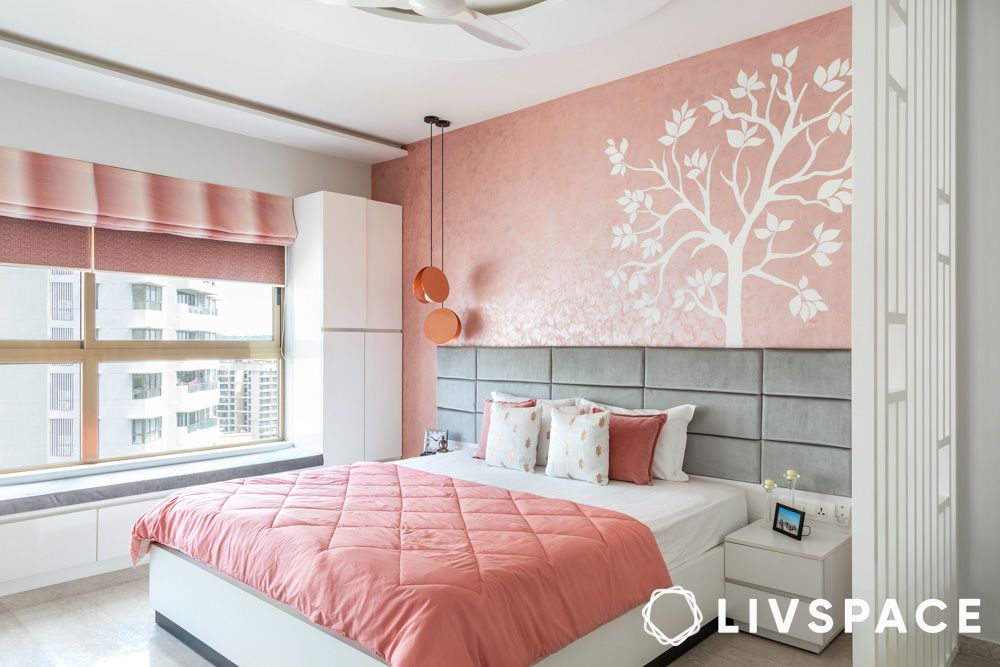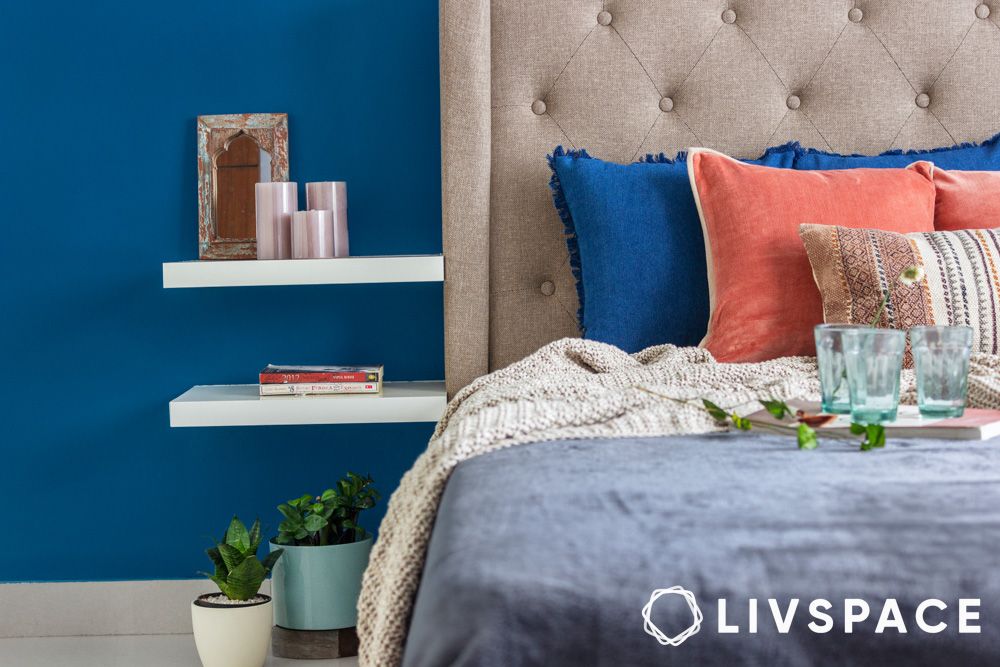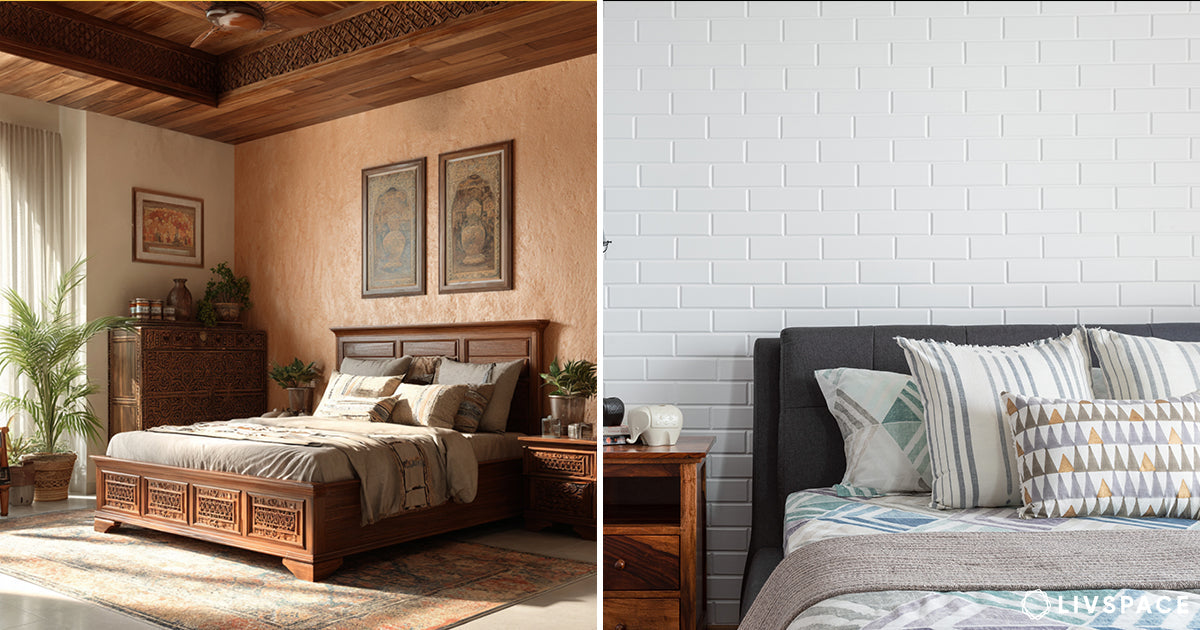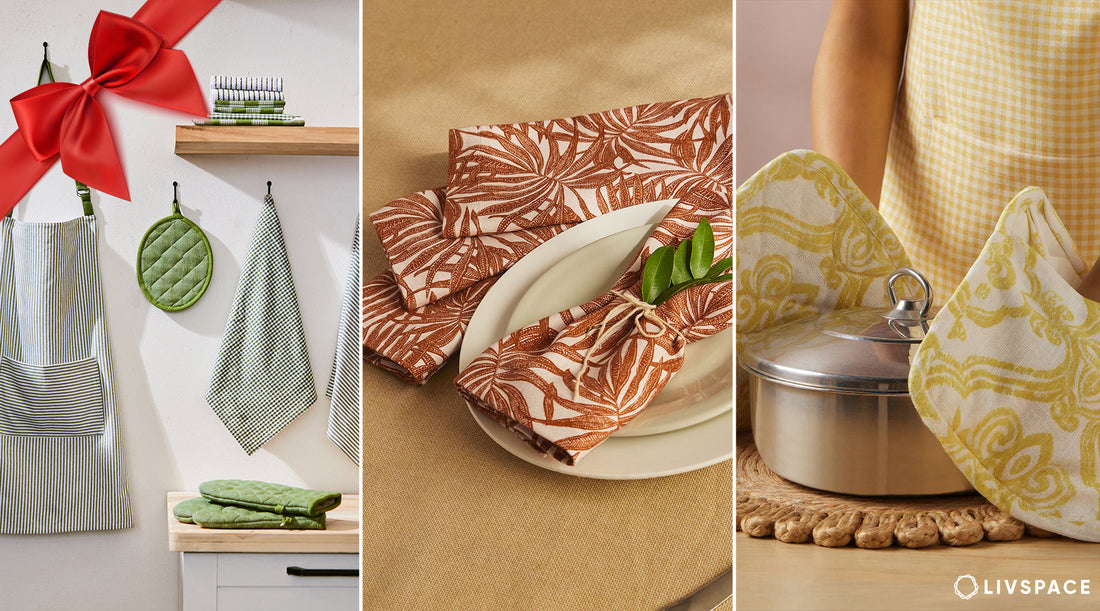Your nani's steel trunk probably held treasures: Chanderi cotton sheets that breathed through Delhi summers, Rajasthani razais with tiny mirrors catching afternoon light, and khadi throws that softened with each monsoon wash. Today's bed layering resurrects this textile wisdom, mixing high-thread-count Egyptian cotton with handloom heritage. We find a delicate balance that honours our ethnic roots and explores global finds. Kalamkari prints dance with minimalist linens, and every layer serves both your aesthetic aspirations and your practical need to survive everything from Gurgaon's winter chill to Chennai's humid nights.
Importance of bed layering
Where handloom heritage meets hotel luxury in modern Indian bedrooms
Bed layering makes particular sense in India's diverse climate zones, where a single blanket simply won't survive the journey from peak summer AC dependency to unexpected monsoon chills. It's practical wisdom disguised as design: lightweight cotton for humid nights, wool blends for hill station winters, and everything in between for those bewildering weather transitions that characterise Indian seasons. Layering also protects your investment pieces. That gorgeous Lucknowi chikankari duvet cover doesn't need daily washing when a simple cotton sheet bears the brunt of use.
Aesthetically, layers tell stories of place and season, transforming your bedroom into a curated space that reflects both global design sensibilities and distinctly Indian comfort needs. And, above everything else, it gives you the warm fuzzies; a feeling of comfy cocoon that you have created over the years, layer after layer.
Key elements of bed layering
The architecture of a well-dressed Indian bed respects both climate and craft:
- Foundation layers: Fitted sheets in breathable cotton (percale weave works brilliantly in humidity) and flat sheets that create your sleeping base—think museum conservation for the beauty above
- Comfort layers: Comforters for winter months, lightweight quilts or dohars for transitional seasons, and cotton coverlets for summer's last cool hours before dawn
- Seasonal performers: Throws that shift with weather—cashmere blends for January mornings, cotton khadi for October evenings, silk stoles for those inexplicably cold April nights
- Pillow landscape: From firm kapok-filled sleeping pillows to decorative bolsters in block-printed covers or mirror-work textiles
- Cultural accents: Vintage saris repurposed as throws, antique phulkaris, or contemporary interpretations of traditional patterns that ground your space in heritage
How to layer your bed (Step-by-step guide)
Let's begin, shall we?
1) Start with a fitted sheet
Your fitted sheet anchors everything else, so choose cotton that can handle Indian washing cycles and climate extremes. Pure cotton percale weaves work wonderfully; they breathe in humidity and soften beautifully with repeated washing (crucial when you're dealing with dust and frequent laundry schedules). Avoid very high thread counts that trap heat; 250-350 thread count often performs better than luxury marketing claims. If you're looking for pretty patterns and the best of materials, try the Livspace fitted sheet collection. Ensure deep pockets for mattresses, plus the cotton mattress protectors most Indian homes sensibly use.
2) Add a flat sheet
Layer a cotton flat sheet that can handle regular washing and monsoon dampness without losing its crisp appeal. This barrier between you and heavier bedding becomes essential during humid months when frequent washing is non-negotiable. Choose colours that hide the inevitable dust that finds its way into Indian homes, or embrace patterns that camouflage real life whilst looking intentional. The flat sheet should extend generously above your top layer, creating a hotel-like fold-back that looks polished even when your day started with load-shedding and ended with construction dust.
3) Layer the comforter
Lightweight luxury that handles everything from monsoon humidity to winter morning chill. Your comforter choice depends entirely on whether you're dealing with Shimla's winter or Bangalore's eternal spring confusion. Lightweight cotton-filled comforters work year-round in most Indian climates, whilst down alternatives suit air-conditioned bedrooms that suddenly lose power at 3 AM. Position evenly with generous overhang. Indian beds often sit higher due to storage considerations, so ensure adequate drop. If you're looking for premium materials at an affordable cost, try the Livspace comforter collection. Consider washability over luxury; beautiful is meaningless if it can't survive real life.
4) Incorporate a throw blanket
Add a throw at the bed's foot that serves both aesthetic and practical purposes—something beautiful enough for daytime styling but functional enough for those unexpected cool spells that characterise Indian weather transitions. Cotton khadi throws age beautifully and handle frequent washing, whilst lightweight wool blends offer warmth without weight. Consider handloom textiles that support artisan communities whilst adding authentic texture. Livspace also offers dohar options that work perfectly as layering pieces. This layer should be easily removable and completely washable, because our homes demand textiles that can handle real life with grace.
5) Arrange pillows
Create a pillow landscape that balances sleeping comfort with daytime aesthetics. Start with firm sleeping pillows (cotton or memory foam that won't retain heat), then add decorative elements in removable covers that can handle frequent washing. Mix textures and patterns: block-printed cottons, mirror-work details, or contemporary geometrics that nod to traditional motifs without feeling costume-like. Consider the practical reality of dust and the need for regular cleaning when choosing decorative pillows. Silk pillow covers from Livspace add a touch of luxury that's still manageable in daily use.
6) Add final touches
Finish with elements that can be easily refreshed or changed seasonally—a vintage textile runner or small decorative cushions. These finishing touches should feel personal and reflect your particular corner of India, whether that's coastal humidity or mountain crispness. Keep final layers minimal and meaningful; Indian bedrooms often serve multiple functions, so avoid anything that complicates daily bed-making or creates unnecessary cleaning challenges. The goal is effortless sophistication that works with, not against, the realities of home life.
Styling tips
Let's get down to the most fun part of it all.
1) Textures
Mix textures strategically, considering how they'll behave in Indian humidity and frequent washing cycles. Pair smooth cotton percales with nubby khadi weaves, or contrast crisp linen with soft cotton gauze. Avoid textures that trap dust or require special care—chunky knits might look Instagram-worthy, but become nightmares in monsoon season. Instead, embrace textures that improve with use: handloom cottons that soften beautifully, linen that develops character, and traditional weaves that were designed to handle our climate's demands whilst looking effortlessly sophisticated.
2) Patterns
Layer patterns with the confidence of someone who understands that Indian textiles have been mixing prints for centuries—we practically invented maximalism. Combine geometric block prints with smaller florals, or pair traditional motifs with contemporary stripes. The key is varying scale and staying within a cohesive colour story. Consider how patterns hide inevitable dust and stains; busy prints are your friends in Indian homes. Avoid patterns that require perfect alignment or pristine maintenance; choose designs that look intentionally relaxed rather than accidentally messy.
3) Colours

Jewel tones like deep indigo, forest green, and rich terracotta hide dirt whilst looking intentionally sophisticated. Avoid pure whites unless you enjoy the futility of fighting dust; instead, embrace creams, soft greys, and warm off-whites that age gracefully. Consider how colours shift in different seasons—monsoon grey light versus harsh summer sun versus winter's golden hours. Your colour palette should feel rich and layered, like a well-spiced curry that reveals different notes with each encounter.
4) Materials

Prioritise natural fibres that breathe and improve with washing, cotton, linen, and blends that can handle laundry practices without losing their appeal. Avoid synthetic materials that trap heat and odours; in Indian humidity, natural fibres aren't just a preference, they're survival. Consider thread count carefully—higher isn't always better when dealing with dust and frequent washing. Look for materials with cultural resonance: handloom cottons, naturally dyed fabrics, or contemporary interpretations of traditional weaves that connect your bedroom to India's rich textile heritage whilst serving modern comfort needs.
5) Seasonal adjustments

Adapt your layers to India's dramatic seasonal shifts. Heavy quilts for brief winters, lightweight cottons for endless summers, and flexible combinations for those confusing transition months when the weather changes daily. Store seasonal pieces properly (those precious silk throws need protection from monsoon humidity), and invest in versatile middle-ground pieces that work across multiple seasons. Consider regional variations—what works in Mumbai's coastal humidity won't suit Delhi's extremes. The art is creating a system flexible enough to handle India's climate chaos whilst maintaining aesthetic coherence year-round.
Common mistakes to avoid

Resist these layering pitfalls that plague bedrooms:
- Over-layering in humidity: More isn't always better—avoid creating suffocating combinations that trap heat and moisture during monsoon months
- Choosing high-maintenance materials: Skip dry-clean-only textiles unless you enjoy expensive cleaning bills and storage headaches
- Ignoring dust reality: White or very light colours require constant maintenance; use colours and patterns that camouflage inevitable dust
- Mismatching climate needs: That heavy European duvet looks luxurious but becomes torture in Indian summers. Choose weights appropriate to your actual weather
- Forgetting washing practicality: Beauty is meaningless if it can't survive regular laundry cycles and dust management needs





